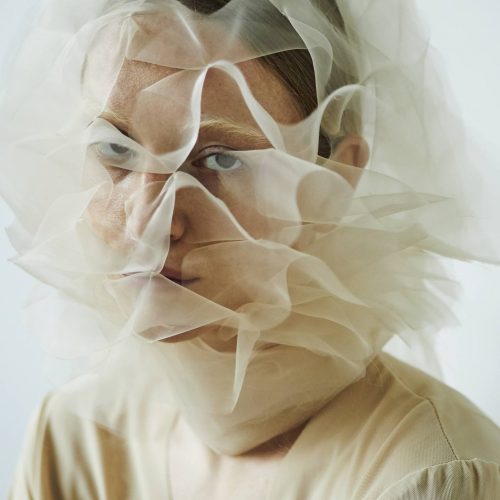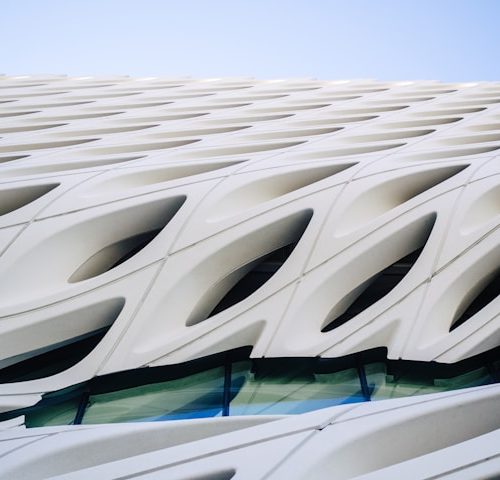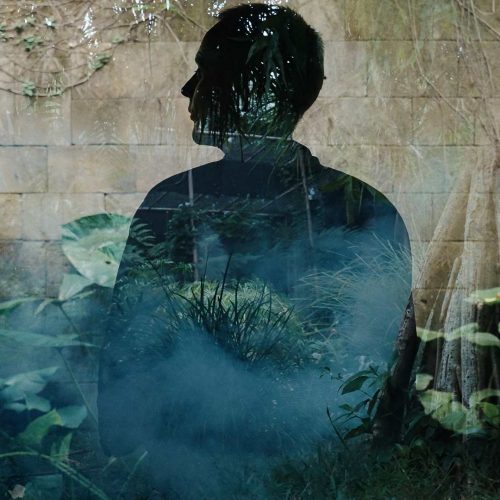Neri Oxman | Nature Inspired Design: Design Inspired Nature
Neri Oxman and her team at Massachusetts Institute of Technology are revolutionizing our approach to design with a new model that may change the way we live, think and create.
To receive the Luxiders Newsletter, sign up here.
Moving towards a better, faster, bigger economy has compromised our planet and our future. We consume non-renewable forms of energy and non-renewable materials at wasteful rates and are now being confronted with the environmental aftermath. Designers, entrepreneurs and creators today need to realize their essential role in developing sustainable materials and procedures that exist in harmony with natural systems.
In nature the cycle of birth, adaptation and decay enables ecosystems to use materials in perpetuity. Natural ecologists explain that waste is virtually non-existent in forests and coral reefs because of growth and biodegradation processes. Within this natural framework, matter produced by one member of an ecosystem living or non-living, inevitably fuels the lifecycle of another. The resulting system is unparalleled in efficiency in the use of energy and resources.
Our “human” environment has been manufactured along a different set of principles — assembled with artificial, inanimate objects that are designed to perform a finite set of functions. To construct this material world we use raw matter from the earth and appropriate it far from its native origins much faster than it can be restored. When its function has been performed, the vast majority of manufactured materials are never recycled and end up as permanent waste in landfills and oceans.
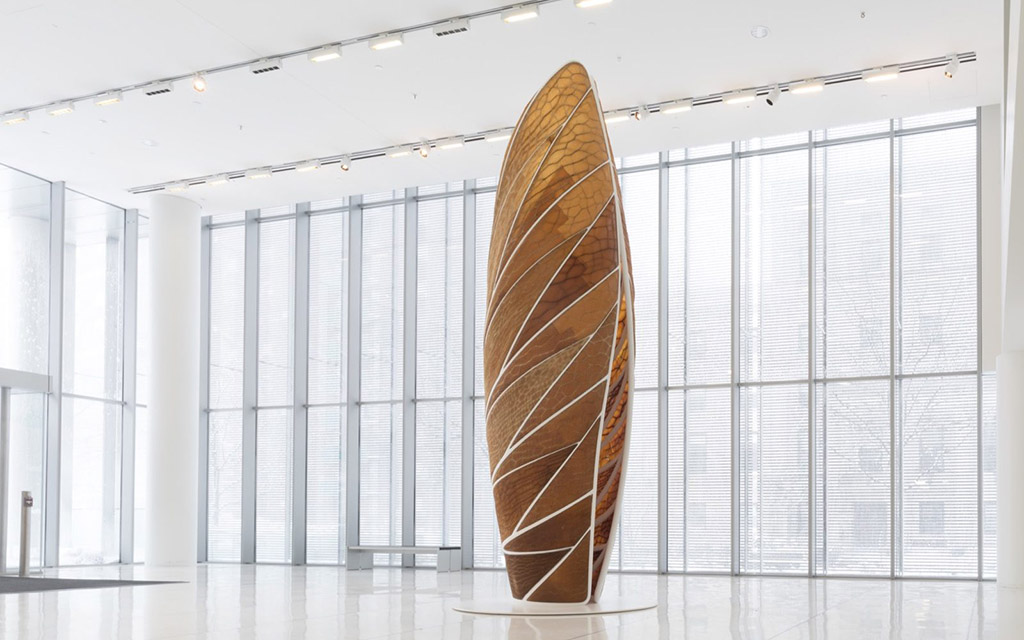
Aguahoja Pavillion © Mediated Matter Group MIT Media Lab
“We cannot solve our problems with the same thinking we used when we created them.” - Albert Einstein.
NERI OXMAN, THE POWER OF NATURAL ECOLOGIES
Architect and designer Neri Oxman founded the Mediated Matter research group at MIT in 2010 and is leading research at the intersection of computational design, design fabrication, materials science and synthetic biology. Oxman aspires to resolve the disharmony between built and biological environments by modelling her designs after the intrinsic intelligence of natural ecologies. Her philosophy surrounds the idea of continuous growth compared to mechanized assemblage. “Nature doesn’t assemble, nature grows.”
Through her approach, products, wearables, or buildings are biologically informed and digitally guided and engineered by, with and for Nature. Oxman’s research and findings are being applied to architectural design, fashion design as well as the design of new technologies. The Mediated Matter Group conducts its ongoing search for materials and chemical substances that can not only sustain but also enhance biodiversity across living ecosystems.
“With 300,000,000 tons of plastic being wasted annually, this is a good time to ask, can we create manmade objects that are natural, but also can we create natural objects that are manmade? - Neri Oxman.
AGUAHOJA PAVILION, 2019
Standing five meters tall, the structure’s skin is made of environmentally responsive bi-composite components which are some of the most abundant materials on our planet - cellulose, chitosan and pectin. These are artifacts are derived from shrimp shells, bug exoskeletons and fallen leaves. Through robotic application of these organic materials, a surface pattern determines the stiffness and color of panels in response to environmental conditions such as heat and humidity. When exposed to rain this material breaks down to its organic building blocks, thereby continuing the natural cycles that enabled their synthesis. Derived from organic matter, printed by a robot, and shaped by heat and water, this work reveals the future of sustainable design-thinking.
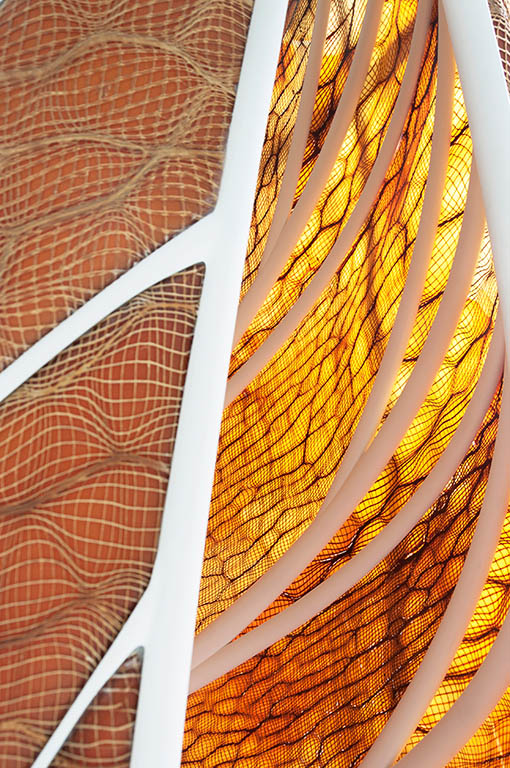
Aguahoja Skin © Mediated Matter Group
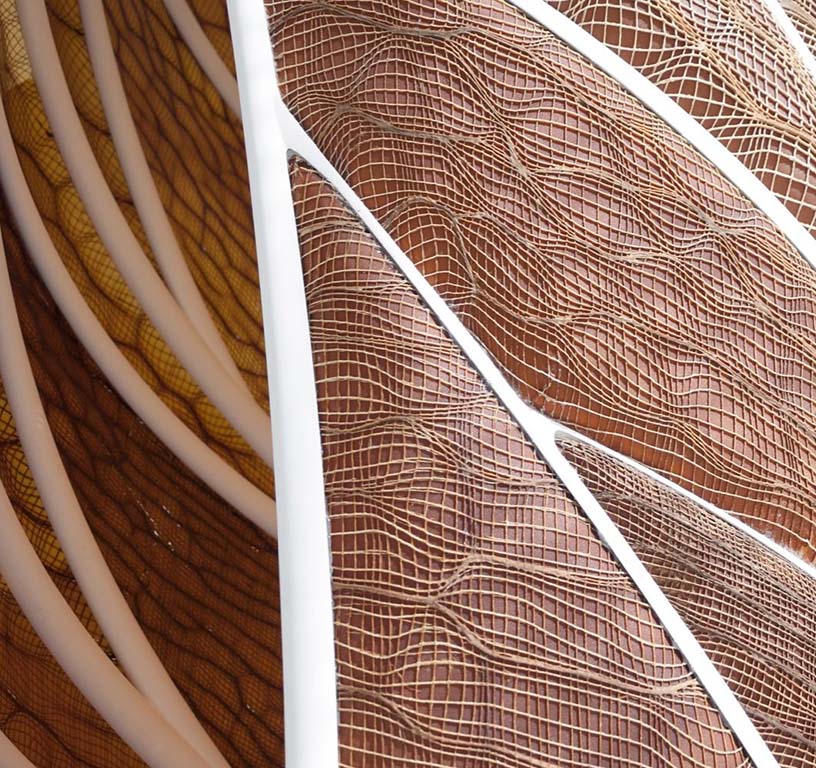
© Mediated Matter Group
FIBERBOTS, 2018
As the spider spins fibers to weave silk webs with adjustable properties to create strong yet flexible structures, other organisms such as bees, ants and termites cooperate to build structures much larger than themselves at fast rates. Mediated Matter’s project called Fiberbots was much inspired by this natural construction methodology.
Fiberbots are small robots designed to coil fiberglass filament around themselves creating strong, tubular structures. These structures can be built in parallel and interwoven to rapidly create structures for architecture. The robots are mobile and use sensory feedback informed by their environment to control the length and curvature of tubing. 16 Fiberbots were deployed to autonomously build a 4.5 meter tall structure, which remained undamaged through the winter in Massachusetts, USA. This union of biological models with robotic technologies provides momentous potential to create designs that were once infeasible.

Tubular Structures © Mediated Matter Group
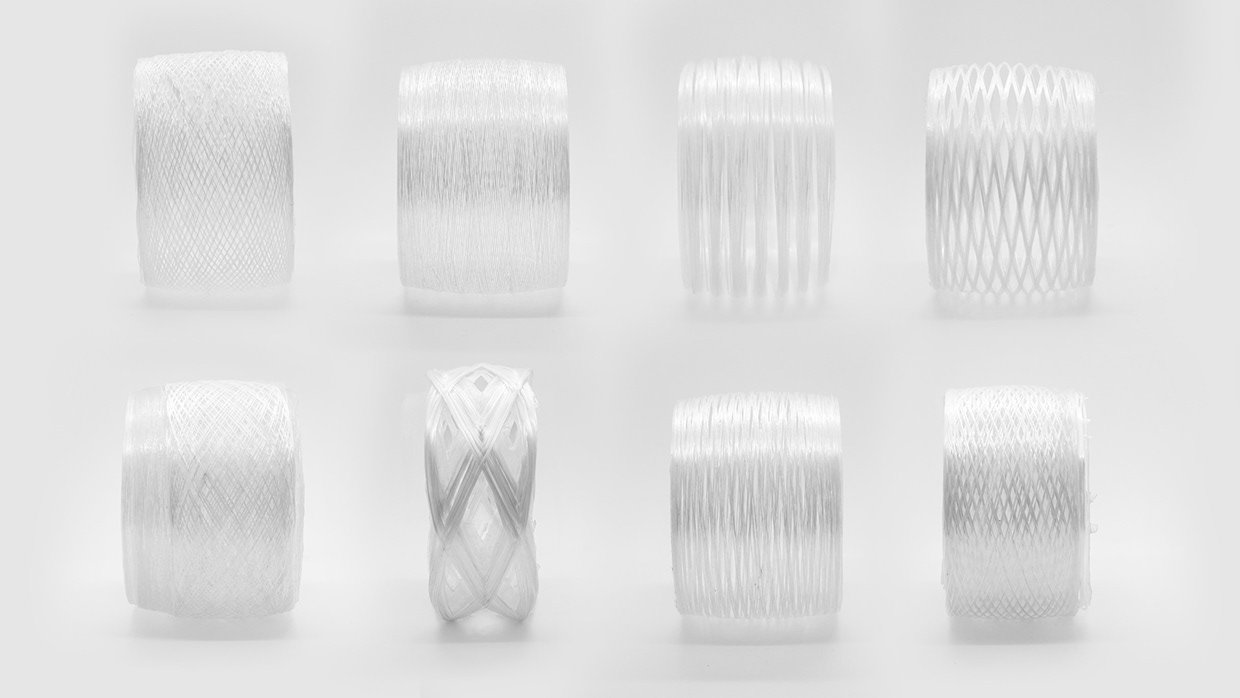
Wound Fiberglass © Mediated Matter Group
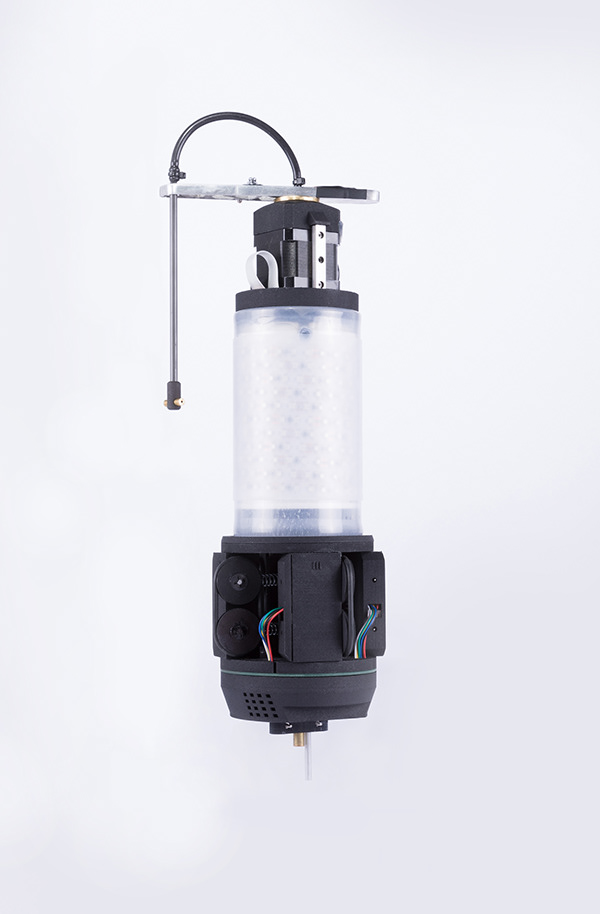
Fiberbot © Mediated Matter Group
SILK PAVILLION, 2013
Some of nature’s most successful architects collaborate in a swarm fashion, using hierarchical structures to control and optimize the production of materials. The Mediated Matters Silk Pavilion project combines computational form-finding strategies with natural material fabrication by silk worms. This structure was inspired by weaving process silkworms use to create delicate cocoons from single strands of silk.
A foundation of the pavilion was first constructed using robotic 3D printing to create a base of threads woven across a steel frame. 6,500 silkworms worked together to complete the rest and fill in the primary structure. The group’s research revealed how the instincts of silkworms almost resembles the work of robotic technologies; the insects can “compute” material organization based on external conditions. In this case, these conditions were put in place by the CNC machine in the construction of the panels for the foundation. The completed structure is unprecedented and a perfect demonstration of the fusion of information technology and biology for nature inspired design.
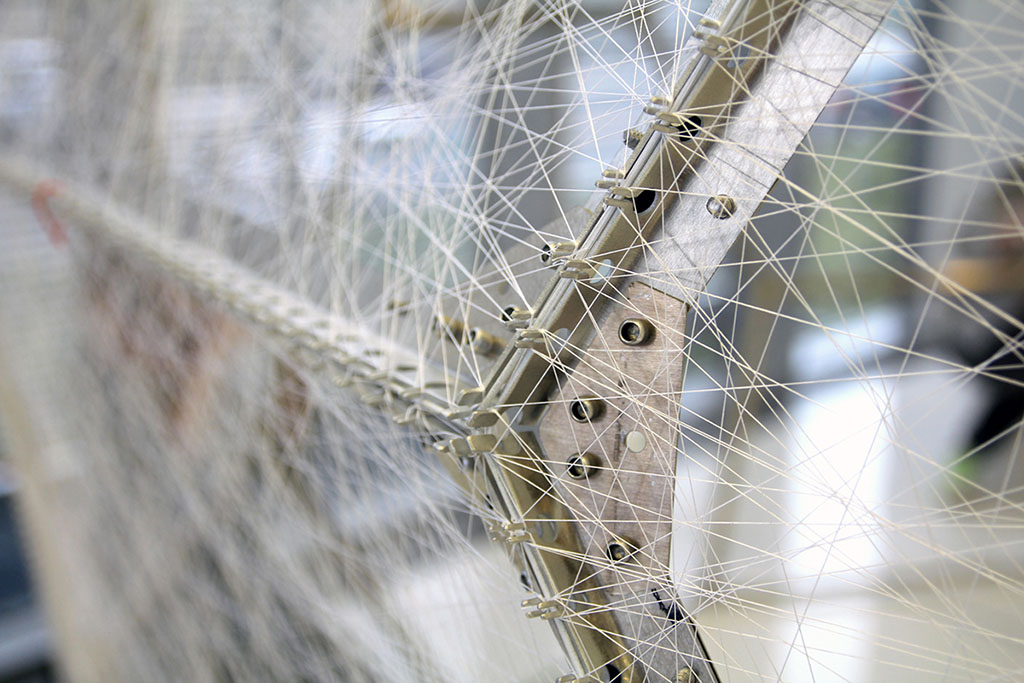
CNC machine printed foundation © Mediated Matter Group
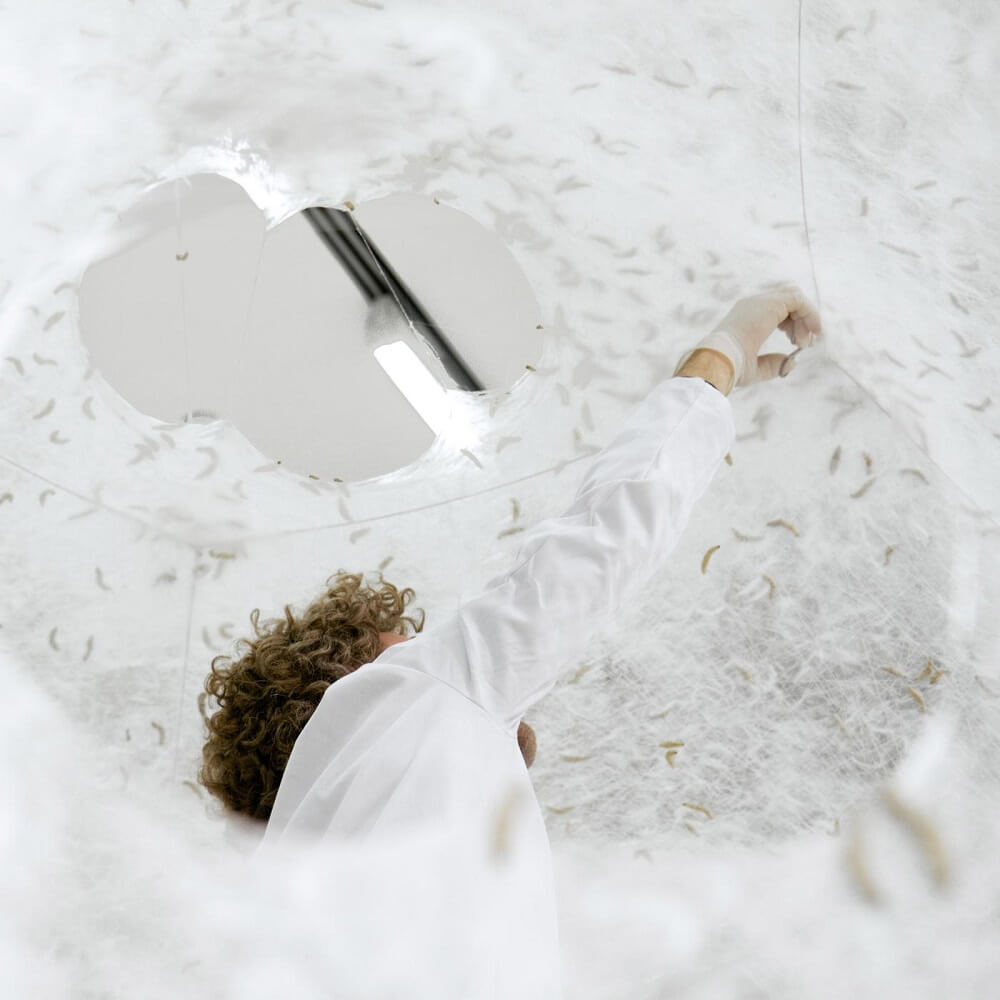
© Mediated Matter Group

Silk Fibers © Mediated Matter Group
A MESSAGE TO DESIGNERS
Design for a world that functions in harmonious equilibrium. A world where ‘the grown’ and ‘the made’ function together within the same larger cycle of creation and decay. Towards a future of sustainable culture, away from irresponsible consumption — our task as designers is to approach every idea with the aim of solving real problems with sustainable solutions. We must seek to improve and alter even disrupt.
+ Words
Ella Kraimer
Luxiders Magazine

